Inhalter
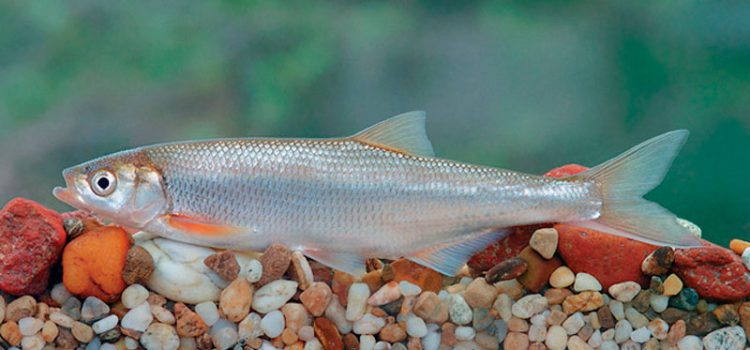
Shamayka or shemaya is a bright representative of the basins of the Azov and Black Seas. This fish is incredibly tasty, so for a long period it was caught in large quantities, both by local fishermen and visitors.
Such uncontrolled catch of this fish led to the fact that by 2006-2007 the number of this fish was significantly reduced and it was almost impossible to meet it in its usual habitat. As a result, the shamayka was listed in the Red Book. Despite the protective actions of the law, poachers and local fishermen still continue to fish for this rare and tasty fish.
Why was the shamayka called the “royal fish”?
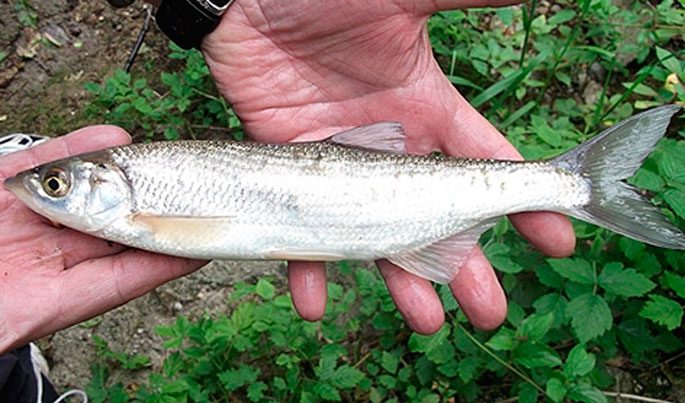
The fish belongs to the family of carp fish species, has a number of individual characteristics, which makes it easy to distinguish it from its relatives. To understand how it differs from other representatives of the carp family, you should pay attention to some features. For example:
- The size of individuals and their weight depend on the habitat: the Black Sea shamayka is larger in comparison with the Caspian. In its natural habitat, it can grow up to 30 cm in length and weigh up to 900 grams. As a rule, individuals come across that have a weight of no more than 300 grams. Larger individuals are already considered trophy specimens.
- The body of the shamayka is distinguished by an elongated, elongated shape, which is not traditional for the family of carp fish species. It is covered with small scales with a silvery tint.
- The lower jaw is somewhat thickened and pushed forward, which indicates serious differences between representatives of the cyprinids family.
- The head, at the same time, in relation to the body is small in size and painted in a dark, with a characteristic bluish tint, color.
- The back of the shamayka has a gray color, and its belly is more light, with a silvery sheen.
- The fins of this fish are grey. On the anal and dorsal fin there is a small border, painted in black.
- The eyes of the shamayka are silvery in color, and in their upper part there is a characteristic black dot.
Habitat

The places where shamayka is found can be listed on the fingers.
It is real to meet her:
- In rivers that flow into the Black, Azov or Caspian Seas. In other words, Shamayka is a prominent representative of the Black and Caspian Sea basins. At the same time, it does not rise high against the current, but prefers to be in close proximity to the sea basins.
- In the Aral Sea, where the largest populations of shamayka live.
- In the coastal zones of the Caspian and Azov Seas.
- Kuban, where it enters directly into the Sea of uXNUMXbuXNUMXbAzov, and this breed is also found in the waters of the Don.
- At the mouths of the Terek and Kura rivers.
- In the Black Sea, although the number of individuals here is limited. From the Black Sea, the shamayka easily moves to the Dnieper and Dniester rivers, where it is also possible to meet this unique fish.
- Within the territories of other European countries, very small populations are found. As a rule, these are the Danube River and some Bavarian reservoirs.
Lifestyle: nutrition and reproduction
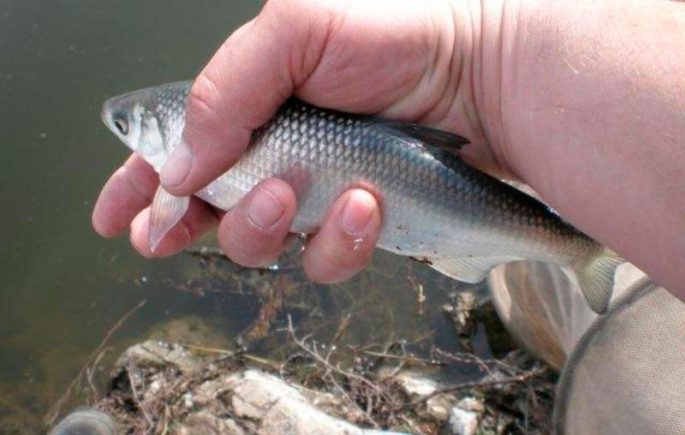
The behavior of the shamayka directly depends on the habitat, which is due to both the geographical location and the availability of food supply. For example:
- On the territory of Russia, it practically does not come out of sea waters. She leaves them only during spawning periods, and then, she does not rise very high against the current.
- Shamayka, living in the reservoirs of Bavaria, prefers to be near reservoirs that are distinguished by clean water and are characterized by a rocky bottom structure. This is due to the fact that this fish prefers to inhabit reservoirs with clean water enriched with oxygen.
- Almost all shamayka populations prefer fast-flowing water bodies. In this regard, it cannot be found in such large rivers as the Volga. In the Dnieper, it is found, but in small quantities. She is more suitable for such rivers as the Kuban or the Terek. Here the population of shamayka is quite high.
Shamaika is an omnivore, although not a big fish, more predatory than peaceful. The basis of its diet includes plankton, as well as all kinds of insects and their larvae, including crustaceans. Already quite adult individuals can hunt fry. Therefore, older individuals should be classified as predators. Particular attention should be paid to the reproduction process, which has certain features. For example:
- After 2 years of life, the shamayka is already ready for reproduction.
- Spawning occurs in warm water, for which it moves from the seas to the rivers.
- Spawning occurs exclusively at night.
- Spawning places are rifts, where there is a fast current, and the bottom in these places is covered with pebbles or stones.
- After spawning, the fish slides to their usual habitats, and after 3-4 days the first fry appear.
- For 1 year after birth, the young shamayka prefers to stay in the rivers. After 1 year, the “little thing” moves to the sea, where its growth is greatly accelerated.
Dialogues about fishing -128- Rostov region, Shemaya.
Catching shamiki
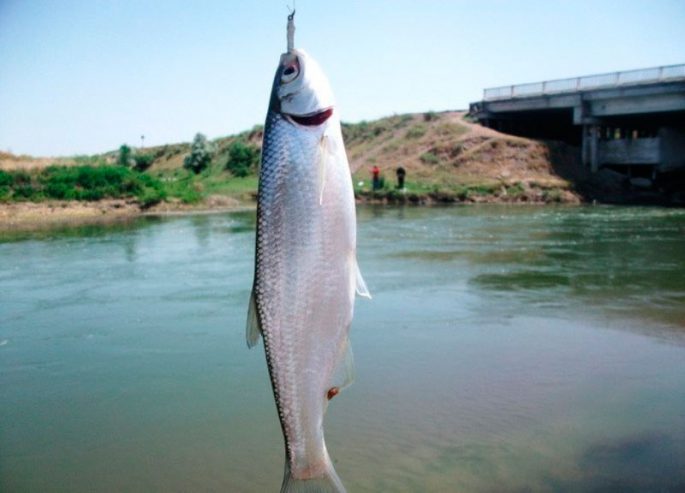
Since the shamayka is more of a predatory fish, then you need to choose the appropriate bait. When going fishing, it is better to stock up on several types of lures and in practice decide on the most catchy of them. Since adults prefer food of animal origin, it is better to take animal baits with you in order to automatically cut off smaller individuals.
Basically, when catching shamayka, fishermen use:

- Motyl.
- Earthworms or earthworms.
- Maggot.
- Grasshoppers.
- Larven vu verschiddenen Insekten.
- Kleng Krustaceaen.
The shamayka doesn’t go over bait especially and with a certain activity it reacts equally to all of the above. Many anglers bait several different baits per hook at the same time. The result is a so-called sandwich, which significantly increases the effectiveness of fishing.
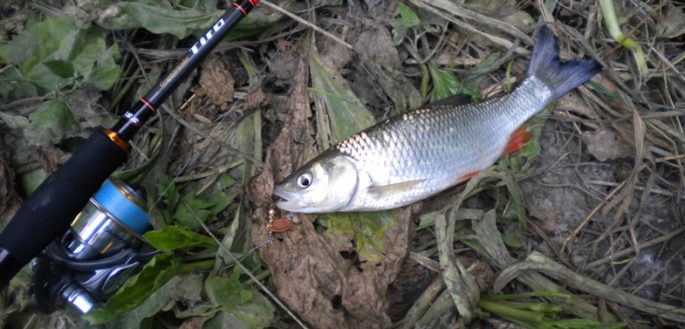
In doing so, attention should be paid to the following factors:
- The active biting of the shamayka starts from the middle or from the end of April. At the same time, the choice of a promising place plays an important role. They mainly fish with an ordinary float rod in wiring, although the use of spinning is bearing fruit.
- For greater efficiency, it is better to feed the place of fishing. This is the only way to interest the fish and keep it at the fishing point. Bait is prepared on the basis of water from the reservoir where the fishing process is carried out. For the preparation of bait, corn grits, cake, any cereals or bran are suitable. We should not forget about store-bought bait, although this approach will cost a little more.
- Before you start fishing, you will have to determine on which horizon the fish is located. Basically, she prefers to be near the bottom, but sometimes she rises closer to the surface.
- Larger individuals do not rise closer than 1 meter to the surface of the water. When catching trophy specimens, this feature must certainly be taken into account. But, a small shamayka, can be located at the very surface.
- For fishing, a fishing line with a thickness of 0,2-0,4 mm, with a smaller leash, is suitable. If the fishing place is clean, without underwater surprises, then the leash can be abandoned.
- The hook is selected no more than the 6th number.
- Shamaika bites vigorously and often, which cannot but please the angler. The float, however, rarely sinks completely into the water. You can’t delay the hooking, otherwise the fish may feel resistance and refuse further bites. The first bite should be accompanied by hooking.
Dialogues about fishing 2013. Azerbaijan Part 1. Shemaya.
Fines
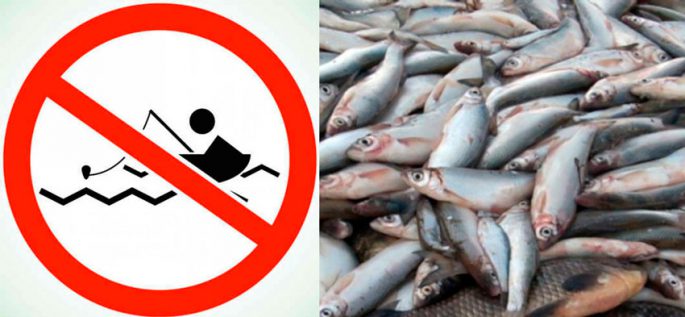
Since the shamayka is listed in the Red Book, there are prohibitions and punishments for catching it. For example:
- Fishing, in especially large quantities, especially with the use of nets, may entail not administrative, but criminal punishment. In this regard, one should expect to receive either a suspended or real term of imprisonment.
- Catching individual individuals by ordinary citizens will entail the imposition of fines in the amount of 2 to 5 thousand rubles. The amount of the fine depends on the number of fish caught. If females are present in the catch, then the real fine may double. At the same time, it must be taken into account that the amounts of fines increase every year.
- In the case of the capture of single specimens by officials, a fine can range from 10 to 15 thousand rubles. As an example, a precedent can serve when a Krasnodar businessman was found to have a shamaika and he was fined for an amount significantly exceeding the indicated figures.
Konklusioun
The shamayka fish got the name “royal fish” due to the fact that its meat is unusually tasty. The fishing process is not associated with any difficulties. At the same time, one must take into account the fact that this tasty fish is practically gone due to uncontrolled fishing. Therefore, at the legislative level, it was decided to limit the catch of Shamaika in order to increase its population. Violation of the law will certainly lead to the imposition of fines, and in some cases, to a real prison term. Therefore, when going fishing, you should think about whether this small fish is worth paying such a high price for it.









